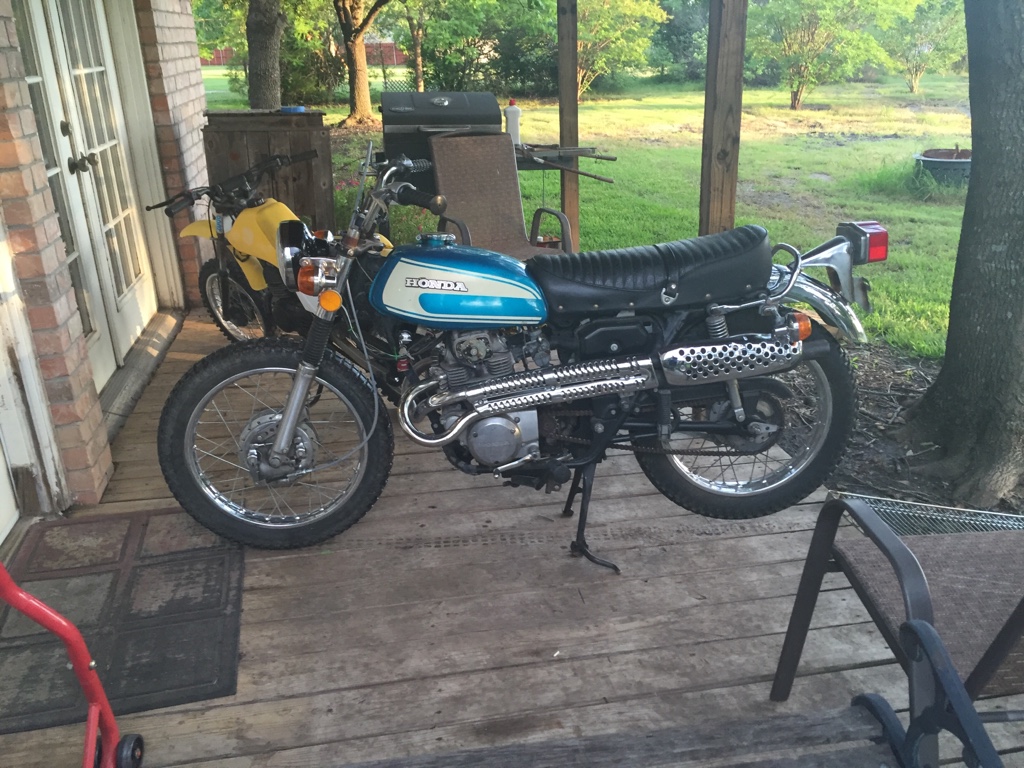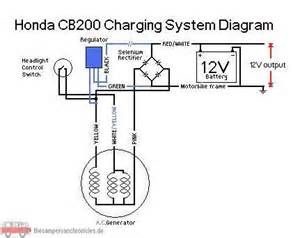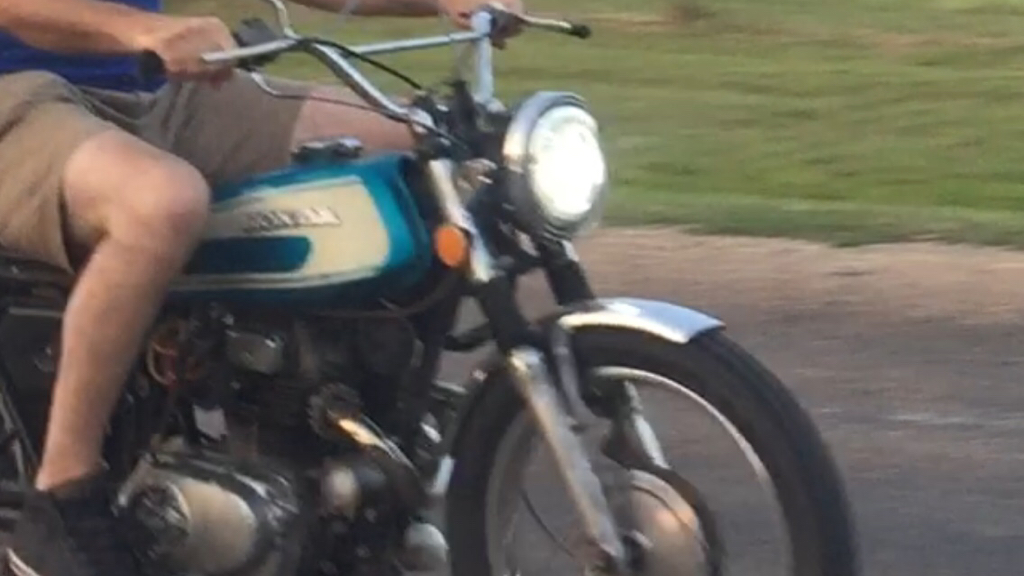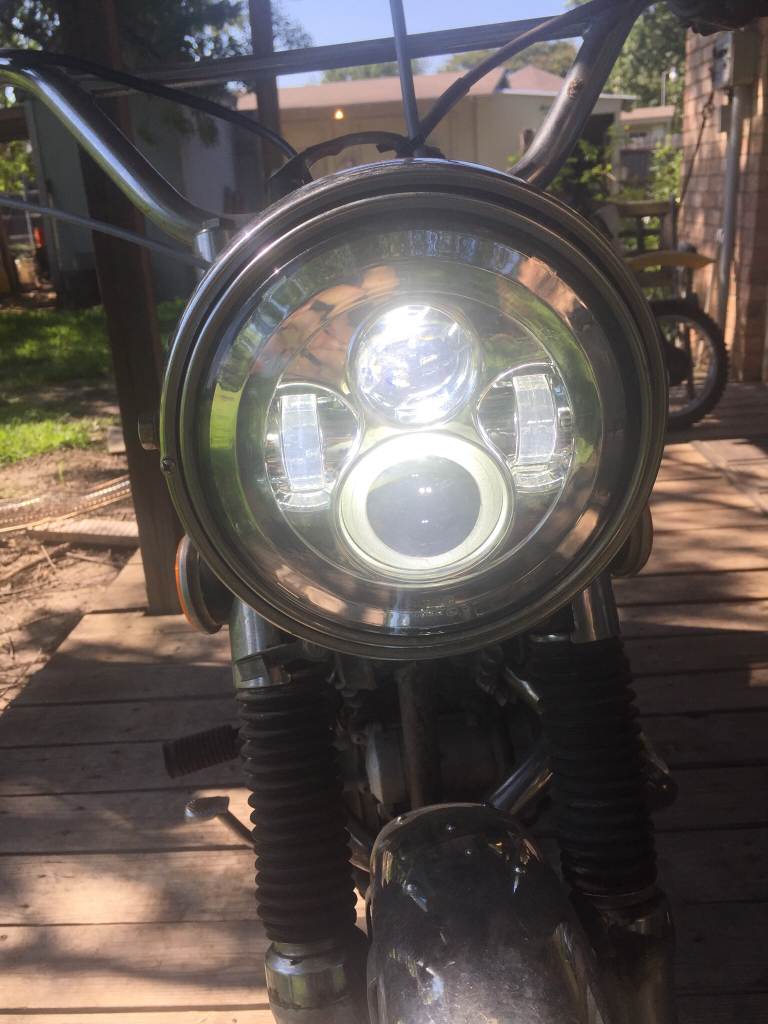We noticed you are blocking ads. DO THE TON only works with community supporters. Most are active members of the site with small businesses. Please consider disabling your ad blocking tool and checking out the businesses that help keep our site up and free.
You are using an out of date browser. It may not display this or other websites correctly.
You should upgrade or use an alternative browser.
You should upgrade or use an alternative browser.
Stator Ac Output
- Thread starter Texasstar
- Start date
Yes, all readings should be the same or very close, and they should increase significantly with revs. They should all be .2 ohms between yellow leads. You can also check for continuity between yellow leads and ground to see if there is insulation breakdown.
Texasstar
Can't is a four letter dirty word
thank you! continuity is the same and nothing is going to ground. Thinking about doing the 360 High Output Stator conversion. However, I am curious why we are getting different readings especially the high reading.deviant said:Yes, all readings should be the same or very close, and they should increase significantly with revs. They should all be .2 ohms between yellow leads. You can also check for continuity between yellow leads and ground to see if there is insulation breakdown.
Sent from my iPhone using Tapatalk
Cb175 and 160 had the charge coils arranged in a very different way to later type alternators. I have never tested voltage across different pairs though. according to the FSM, CB200 is the same. One lead is common to all , another has one pair of charge coils and the third has two pairs in parallel and that is connected in via the headlamp switch to increase the charge when needed.
I just ordered a Sparck Moto regulator/rectifier for the 160 and I would think that Sonrier would know for sure.
I just ordered a Sparck Moto regulator/rectifier for the 160 and I would think that Sonrier would know for sure.
All of the Honda twins (and most of the singles) made before 1978 have the same configuration, more or less.
Single phase systems are like those most often described to us in high school. One long copper wire wrapped around a bit of iron and excited by a rotating (or reciprocating magnet). Either end of the wire represents the output from the alternator and it alternated between positive and negative voltage on both ends.
The Honda system is very similar, except that one side of the output is two wires instead of one. In the 1970s models, the same side of the output are the yellow and the white wires, with the pink being the common. Sort of think of the wiring like a 'Y'. Two wires on one end, joined, then a single wire coming from the other side.
The reason for this split is because the regulators, back in the day, were not exceedingly good at actually regulating the voltage. The system was designed to sort of balance itself out based on the given electrical needs. The alternator's output could be varied by only drawing currently from a portion of the windings, by segmenting the output wires. Pink to yellow represents a partial output of the alternator and pink to white represents a partial output of the alternator. Pink and then yellow and white together, are the whole.
With the headlight off, the bike is running from the pink/yellow combo and when you switch the headlight on, the output of the white is included in the mix and you now have full charging.
Even with this balancing system, the regulator could often struggle with the additional wattage. That's why these bikes came with such large batteries in comparison to their power needs. Much larger bikes, with electromagnetic alternators, like the CB750 would require a 14Ah battery, but the CB200 still used a 12Ah battery. A large battery, in addition to providing power for the starter motor and other such things, also acts like its own regulator. Large batteries can sink a lot of current in a system if there is more power being generated than being used. The CB160, for instance, didn't even use a regulator and relied solely on the battery for this purpose.
Single phase systems are like those most often described to us in high school. One long copper wire wrapped around a bit of iron and excited by a rotating (or reciprocating magnet). Either end of the wire represents the output from the alternator and it alternated between positive and negative voltage on both ends.
The Honda system is very similar, except that one side of the output is two wires instead of one. In the 1970s models, the same side of the output are the yellow and the white wires, with the pink being the common. Sort of think of the wiring like a 'Y'. Two wires on one end, joined, then a single wire coming from the other side.
The reason for this split is because the regulators, back in the day, were not exceedingly good at actually regulating the voltage. The system was designed to sort of balance itself out based on the given electrical needs. The alternator's output could be varied by only drawing currently from a portion of the windings, by segmenting the output wires. Pink to yellow represents a partial output of the alternator and pink to white represents a partial output of the alternator. Pink and then yellow and white together, are the whole.
With the headlight off, the bike is running from the pink/yellow combo and when you switch the headlight on, the output of the white is included in the mix and you now have full charging.
Even with this balancing system, the regulator could often struggle with the additional wattage. That's why these bikes came with such large batteries in comparison to their power needs. Much larger bikes, with electromagnetic alternators, like the CB750 would require a 14Ah battery, but the CB200 still used a 12Ah battery. A large battery, in addition to providing power for the starter motor and other such things, also acts like its own regulator. Large batteries can sink a lot of current in a system if there is more power being generated than being used. The CB160, for instance, didn't even use a regulator and relied solely on the battery for this purpose.
Texasstar
Can't is a four letter dirty word
Wow now it makes so much more sense why Honda wired the bike the way they did...so is Rick's hot stator wired in series to provide more voltage instead of a split demand stator? Sometimes when you ask why you get Y for the answer. Lol!Sonreir said:All of the Honda twins (and most of the singles) made before 1978 have the same configuration, more or less.
Single phase systems are like those most often described to us in high school. One long copper wire wrapped around a bit of iron and excited by a rotating (or reciprocating magnet). Either end of the wire represents the output from the alternator and it alternated between positive and negative voltage on both ends.
The Honda system is very similar, except that one side of the output is two wires instead of one. In the 1970s models, the same side of the output are the yellow and the white wires, with the pink being the common. Sort of think of the wiring like a 'Y'. Two wires on one end, joined, then a single wire coming from the other side.
The reason for this split is because the regulators, back in the day, were not exceedingly good at actually regulating the voltage. The system was designed to sort of balance itself out based on the given electrical needs. The alternator's output could be varied by only drawing currently from a portion of the windings, by segmenting the output wires. Pink to yellow represents a partial output of the alternator and pink to white represents a partial output of the alternator. Pink and then yellow and white together, are the whole.
With the headlight off, the bike is running from the pink/yellow combo and when you switch the headlight on, the output of the white is included in the mix and you now have full charging.
Even with this balancing system, the regulator could often struggle with the additional wattage. That's why these bikes came with such large batteries in comparison to their power needs. Much larger bikes, with electromagnetic alternators, like the CB750 would require a 14Ah battery, but the CB200 still used a 12Ah battery. A large battery, in addition to providing power for the starter motor and other such things, also acts like its own regulator. Large batteries can sink a lot of current in a system if there is more power being generated than being used. The CB160, for instance, didn't even use a regulator and relied solely on the battery for this purpose.
Sent from my iPhone using Tapatalk
Texasstar
Can't is a four letter dirty word
That also makes sense why some are having issues on the cb175 with getting their lights to work with a Rick's stator.Sonreir said:Pretty much, yup.
Rick's stator is matched with a new regulator, so they can skip all the tricks of the earlier decades.
Sent from my iPhone using Tapatalk
Texasstar
Can't is a four letter dirty word
so the Y would be putting out more voltage than the single leg?Sonreir said:Pretty much, yup.
Rick's stator is matched with a new regulator, so they can skip all the tricks of the earlier decades.
Sent from my iPhone using Tapatalk
If you label the points of the Y, starting in the top left and proceeding clockwise as one, two and three, this is how it pans out:
One to two will have only a very little voltage.
One to three will have a lot of voltage.
Two to three will have a lot of voltage, but will be different than one to three.
One and two, spliced together, and then between one/two and then three will have the most voltage.
In all of my Honda twins, I run with the third setup and use a modern r/r.
One to two will have only a very little voltage.
One to three will have a lot of voltage.
Two to three will have a lot of voltage, but will be different than one to three.
One and two, spliced together, and then between one/two and then three will have the most voltage.
In all of my Honda twins, I run with the third setup and use a modern r/r.
If you really wanted to, you could, but it wouldn't be my choice.
AC and DC circuits need to be kept separate and when you start mixing the two types on the bike, things get complicated. Check out the wiring on a GN400 sometime.
I stick to DC whenever the option presents itself. This is because batteries only operate in DC, and since you're needing to rectify the current from the alternator for the battery, you might as well do it for everything to keep life simple.
AC and DC circuits need to be kept separate and when you start mixing the two types on the bike, things get complicated. Check out the wiring on a GN400 sometime.
I stick to DC whenever the option presents itself. This is because batteries only operate in DC, and since you're needing to rectify the current from the alternator for the battery, you might as well do it for everything to keep life simple.
Tex, That doesn't look right. I think you will find that the light switch has two sets of contacts (at least). When the headlight is on, one pair connects the battery to the lights and the other pair connects the yellow and white leads to get full power to charge the battery.
No AC lighting on a CB or CL.
No AC lighting on a CB or CL.
Texasstar
Can't is a four letter dirty word

Just for grins the cb200 puts out 18, 12, and 6 ac volts per what Matt said above. At idle it is making 12.8 volts and at 1500 rpms it is 13.4 volts.
Thanks guys! For future scribes don't use that diagram above for the cb200 it is wrong.
Sent from my iPhone using Tapatalk
Texasstar said:Thanks guys that diagram was confusing at best. The one I have in my manual is too tiny for my old eyes. Glad to know ac/dc only works in a rock band
You thought it was "All Screwed Up" or that it's all "Ruff Stuff", and you were "Thunderstruck" when you realized you were "Back in Business" and that it was not just that "Moneytalks" ...
And on it goes
Texasstar
Can't is a four letter dirty word
I have no doubt that as long as you keep a "stiff upper lip" it will keep you from a "meltdown" ...God what a great album! Our little shed shakes with the band from down under...you know "I can't stand still"teazer said:You thought it was "All Screwed Up" or that it's all "Ruff Stuff", and you were "Thunderstruck" when you realized you were "Back in Business" and that it was not just that "Moneytalks" ...
And on it goes.......
Sent from my iPhone using Tapatalk







